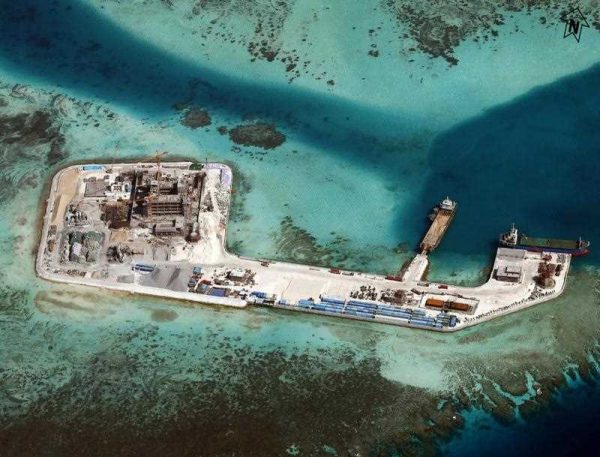Since 2010, the US response to the escalation of tensions in the long-running territorial dispute had been deliberately dispassionate. The US had a carefully formulated position that did not take sides, avoided the use of force and called for the dispute to be resolved by international law. But in March 2015, the incoming head of the US Pacific Command described China as building a great wall of sand in the South China Sea. In May, the Wall Street Journal reported that the Department of Defense was considering a series of exercises to pressure China. And the US dispatched military aircraft, including a Poseidon P-8, on an overflight of China’s reclamation activities, complete with CNN news crew in tow.
For some time policy analysts and some politicians have advocated for a ‘cost imposition’ approach to Beijing. This approach suggests that the US would be more likely to change China’s behaviour by making China pay a price for activities that make the US and its allies uncomfortable, than through diplomatic niceties. The shift in the US approach appears to be informed by this thinking. China’s reclamation activities have moved at such pace and have enough potential to change the strategic game in the South China Sea that — so the thinking appears to be — a more muscular approach is necessary.
This thinking is strongly influenced by the belief that it was the show of resolve and muscle in US–Japanese relations that led to the improvement in Sino–Japanese relations after a very tense period in 2013–14 regarding territorial disputes in the East China Sea. It is also shaped by the belief that China’s regional policy follows a pattern where it tests the limits of acceptable behaviour and then retreats when it feels it has gone too far. In essence, the US believes that upping the costs of Chinese behaviour will be met with a more prudent approach from Beijing.
But if this is what Washington believes, then it will be disappointed — at least if its intent is to get Beijing to cease reclamation activities and return to the status quo ante. Even if there were supporters of such a posture at the pointy end of Chinese decision-making — unlikely given that this activity would have been approved by Xi Jinping — the fact that the US and its allies have publicly called for cessation makes it, in domestic political terms, a non-starter.
Perhaps more importantly, the US may have left it a little too late to try to use a more resolute approach to get China to halt its activities. The scale of work, its cost and the speed with which it has been carried out indicates a very high priority placed on these activities. The chance of them being halted midcourse is unimaginable, short of the actual use of force. Had the US more clearly impressed its view that this was an unacceptable change of the status quo earlier on, and indicated a price that China would have to bear if it continued, then it might have stayed Beijing’s hand.
Washington appears to have learned the wrong lessons from the East China Sea dispute. The two territorial disputes are not quite the diplomatic or strategic analogues they may appear to be. Where the East China Sea is simple but high risk — a bilateral dispute between Japan and China with the US a clear stakeholder — the South China Sea is complex and low risk. China has long maintained that it is involved in a series of bilateral disputes in which it is clearly the stronger party.
The South China Sea territorial dispute is complex and legally murky. The fact that both Vietnam and the Philippines have been carrying out reclamation and construction activities to support their claims means that the US cannot paint China as the unambiguous wrongdoer. The ability of the US to impose costs on China for undertaking reclamation activity is much less than it may at first appear.
For the US, the key issue is not so much the specifics of who owns which features or the maritime jurisdictions that follow from sovereignty claims. The issue is whether China’s activity will affect the freedom of manoeuvre that the US navy has enjoyed through the sea for generations. The US position is about ensuring that the claimants do not succeed in constraining the movement of naval and civilian vessels that travel through exclusive economic zones.
The international consensus is that freedom of navigation means what it says — states are free to do whatever they wish, barring the economic exploitation of resources in and under the sea. Ramping up pressure in the rhetoric and planning military exercises is intended to ensure that once the construction work is complete on Fiery Cross Reef and elsewhere, China will think twice about taking any further steps. The challenge for the US and its allies is that a cost imposition strategy means more risk for all. This is hardly a recipe for a stable and secure regional setting.
Nick Bisley is Executive Director of La Trobe Asia and Professor of International Relations at La Trobe University.

